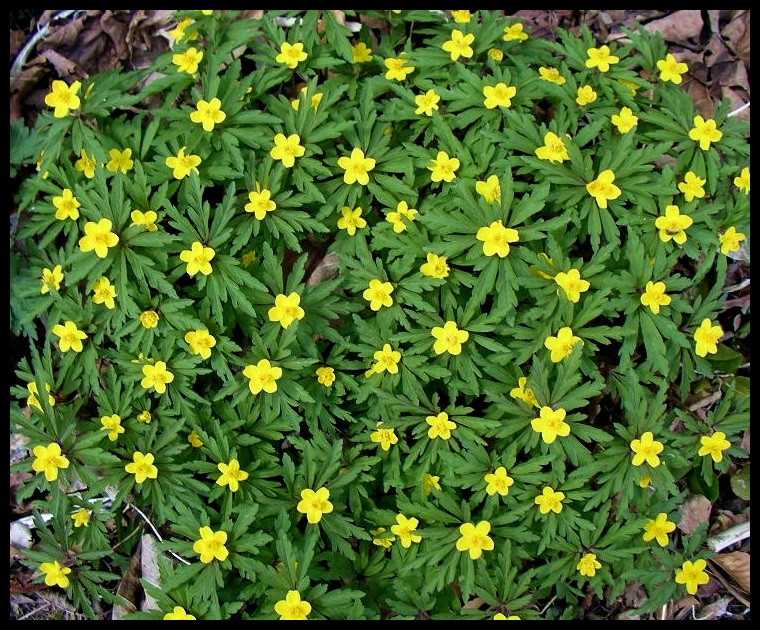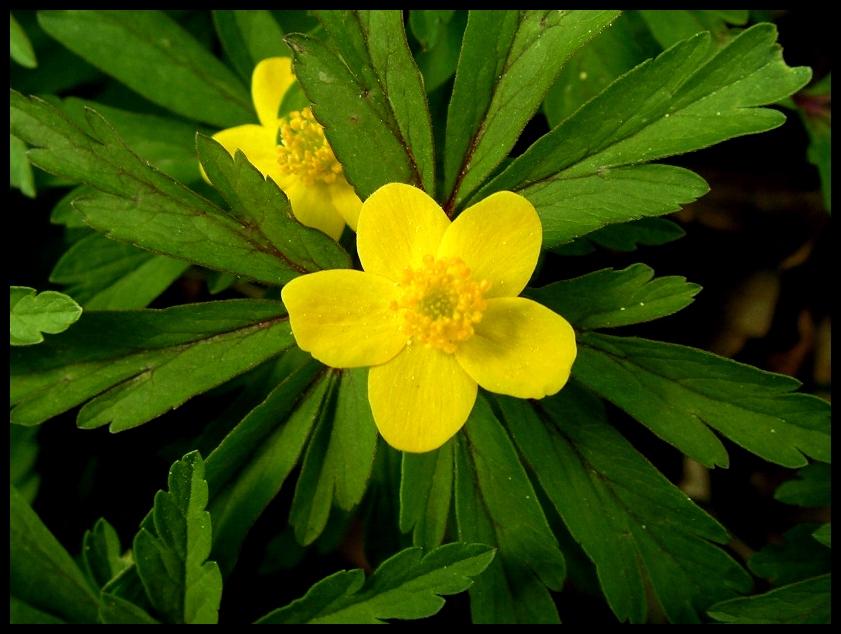Plant of the Month for May, 2012

Anemone ranunculoides
(ah-NEM-oh-nee ra-nun-kul-OY-deez)
General Information:
An absolutely gorgeous yellow wood anemone.
This plant has received the Award of Garden Merit by the Royal Horticultural Society, an award that is given to special garden worthy plants. It forms a tight low mat of ferny leaves and at the center of each leaf it produces a bright yellow flower. The flower has five to eight tepals (both petals and sepals look the same) and faces up producing a very showy display.
The common name ‘wood anemone’ is confusing since it is used to describe a number of plants, both native to North America and Europe. It is probably best not to use this term to describe any plant. Anemone ranunculoides is also called yellow anemone, yellow wood anemone and buttercup anemone.

Anemone ranunculoides; photo by Robert Pavlis
Anemone ranunculoides can grow in fairly dry soil conditions making it ideal for planting under trees. On such a site the plant will go dormant in summer. If grown in wetter conditions, the leaves will remain green all summer.
A number of sources consider the plant to have a bulb, but the storage structure of the plant is more correctly called a rhizome (ie underground stem). The rhizome creeps just under the surface of the soil, expanding the size of the plant. In my experience, spreading is very slow, but some sources report faster spreading. It is not considered invasive.
Anemone nemorosa (also called wood anemone) is similar to A. ranunculoides but has slightly larger flowers which are usually white. Anemone × lipsiensis is a hybrid between these two species and has pale yellow flowers.
The name Anemone is derived from a Greek word, anemos, meaning wind. The genus is known as windflowers. Ranunculoides is derived from the Family name, Ranunculaceae.

Anemone ranunculoides; photo by Robert Pavlis
Life Cycle: perennial
Height: 15 cm (6 inches)
Bloom Time: early spring, soon after the snowdrops are finished
Natural Range: Central Europe
Habitat: deciduous forests, stream banks
Synonyms: Anemanthus ranunculoides, Anemone lutea
Cultivation:
Light: part shade
Soil: prefers humus-rich, moist, clay soil, pH: 6 – 7.5
Water: prefers a moist soil, but is draught tolerant especially in summer
USDA Hardiness Zone: 4a – 8b
Propagation: division in spring, comes true from seed. Plant seed as soon as it is ripe
Seedex availability (ORG&HPS annual Seed Exchange): rarely available
